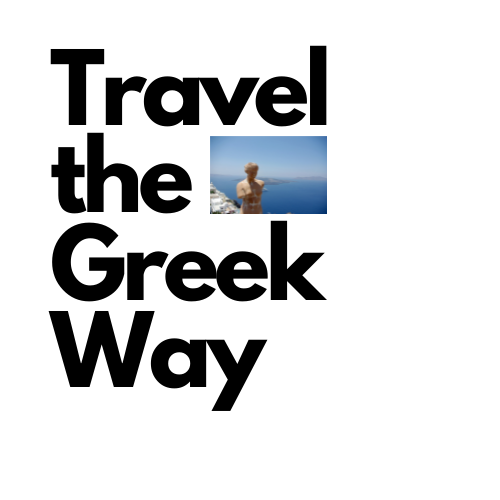The ancient port of Kechries in Corinth (Κεχριές, Kenchreai in ancient Greek) was one of the two important ports of the area in ancient Greece. Corinth was a powerful ancient Greek city-state, 90 km southwest of Athens.
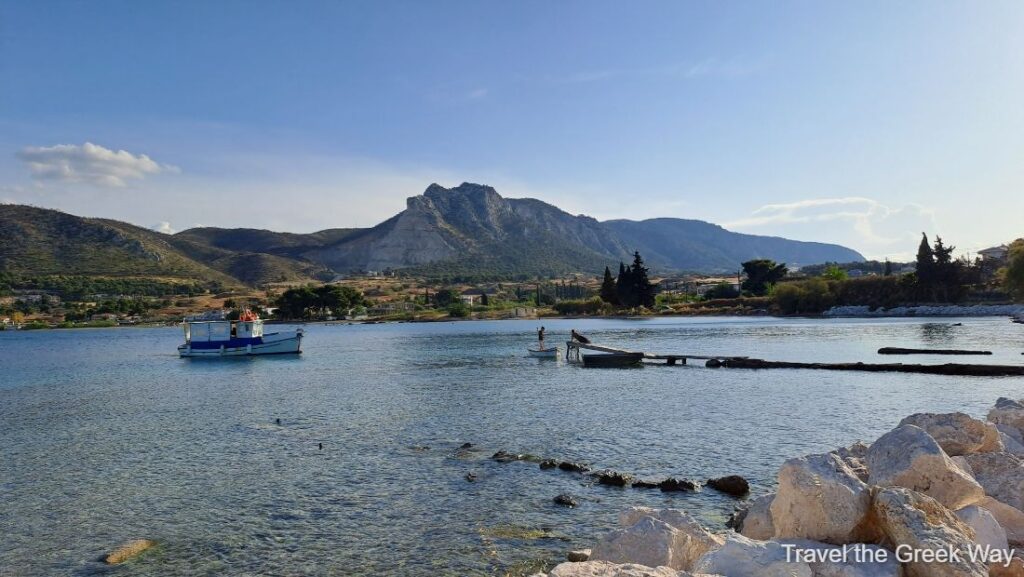
Kechries served the ships coming from the Saronic and the Aegean sea, the eastern part of Corinth whereas Lechaion port served the ships coming from the Corinthian Gulf, Ionian islands, and Italy.
The ports were named after Lechis and Kechrias, the sons of Poseidon, the god of the sea in Greek mythology.
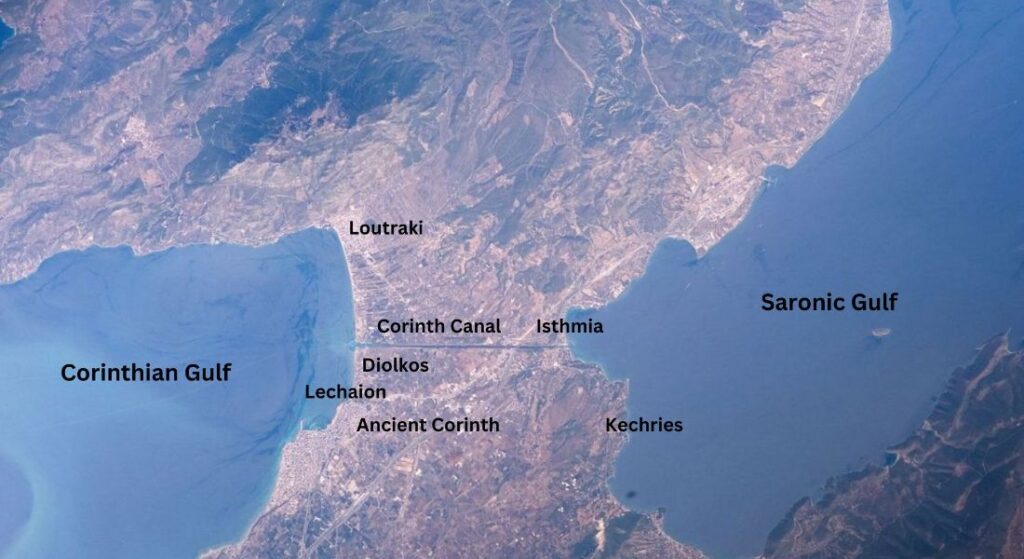
Imagine how it must have been thousands of years ago, long before the Corinth Canal (the Isthmus of Corinth) was excavated and engineered (the canal started working in 1893).
The ships coming from the western part of Greece, through the Corinthian Gulf, would arrive in Lechaion port and unload their goods.
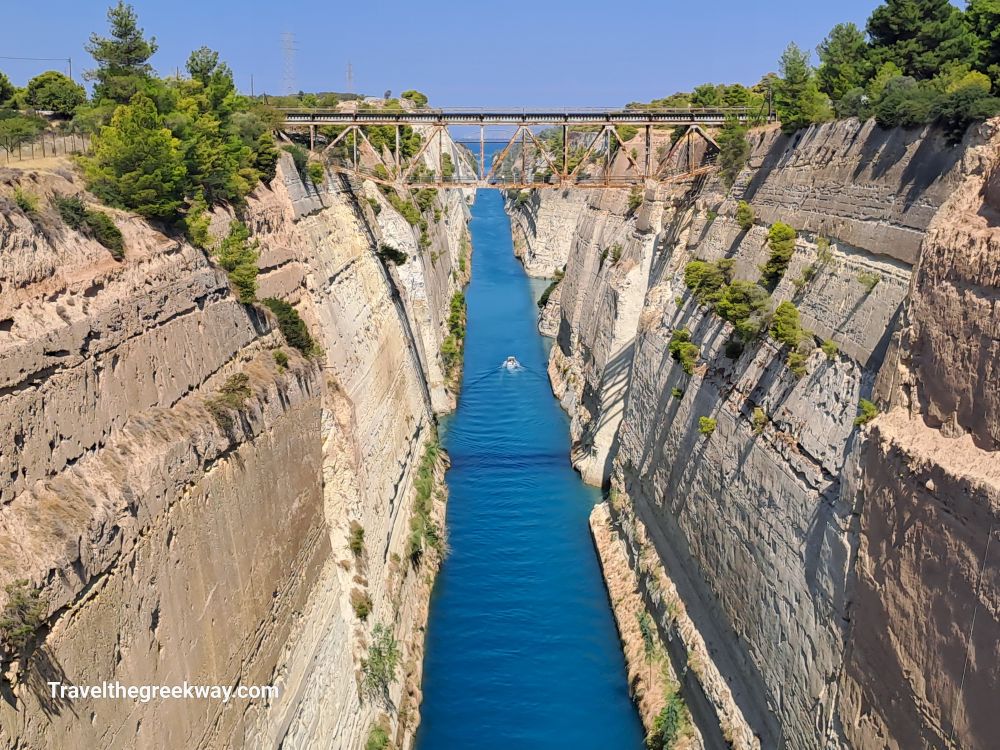
If the ancient ships wanted to go to the Saronic Gulf their only option was to sail all around Peloponnese, a dangerous trip of many days as the south of Peloponnese has the hard-to-sail capes of Malea and Tainaron. There was a need for a much better plan than this.
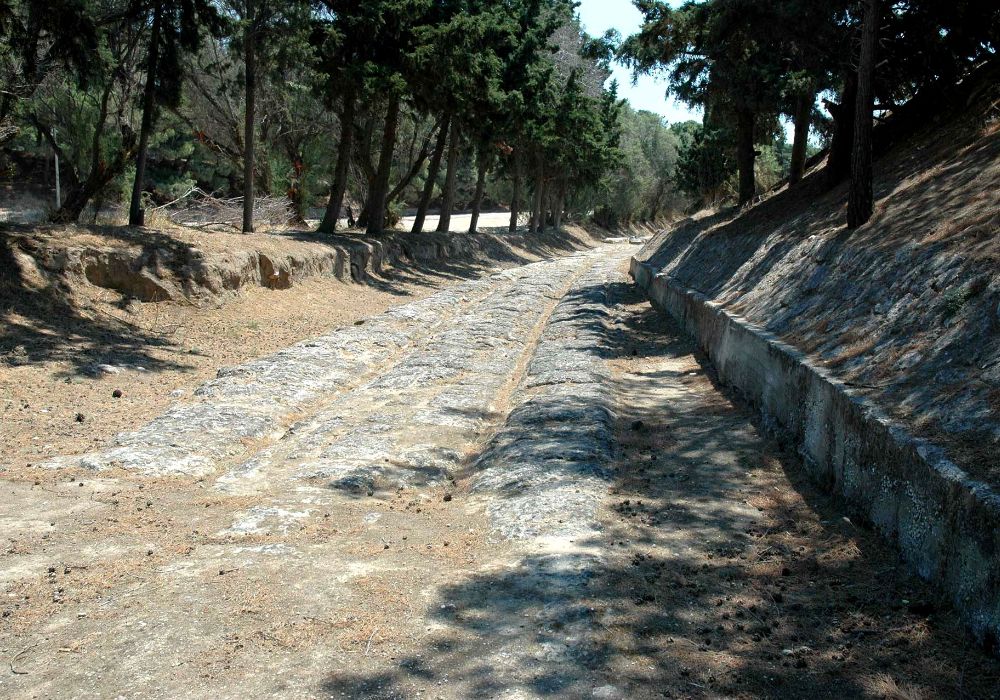
Periandros (years of his reign 627–585 BCE) was a capable ruler of Ancient Corinth who turned the city into one of the richest and mightiest in the ancient world.
His greatest project was the Diolkos, a brilliant 8-km-long paved construction whereupon the ships were towed on platforms by slaves from Kechries to Lechaion and vice versa.
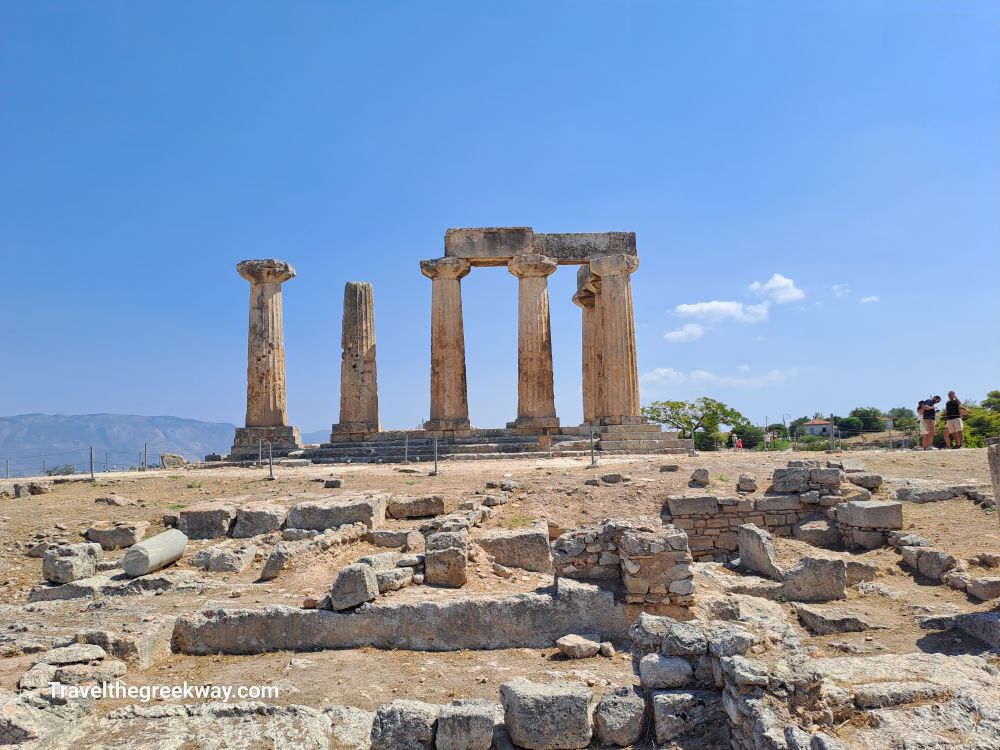
Actually, the ending points of Diolkos were a bit further from the ports, in the areas of Posidonia and Schinounta, but it was close enough.
All the ships had to pay tolls to Corinth to be pulled from one port to the other and as you can imagine, this was a substantial income for Corinth as the sea trade was very important for the ancient world.
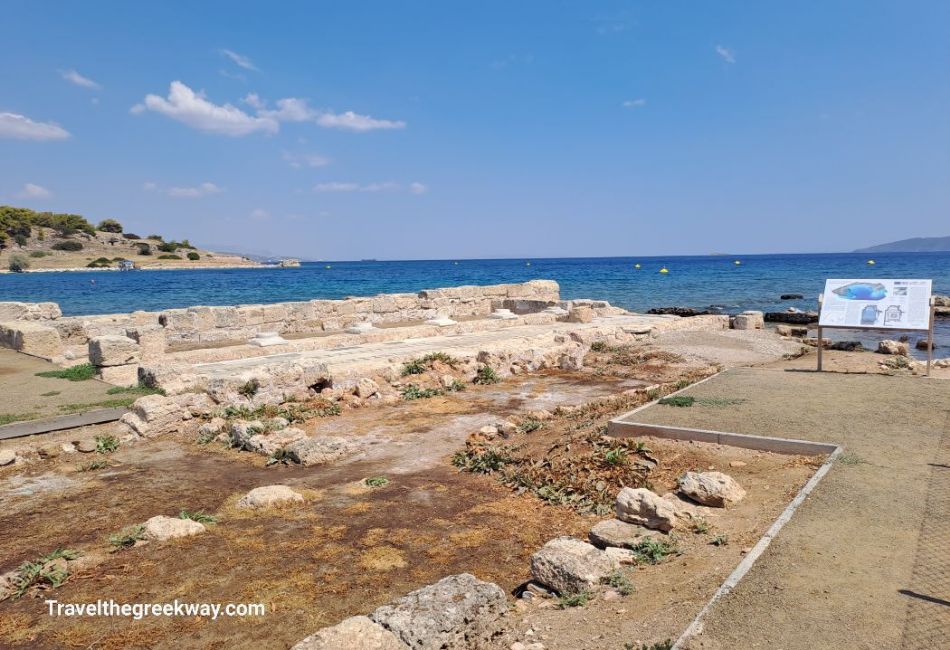
This guide to the ancient port of Kechries in Corinth includes information about:
- Where the location of Kechries is and how to get there.
- Short historical facts on Kechries throughout the centuries.
- Kechries in the Bible and Apostle Paul.
- The remaining ruins of Kechries port and a short video of my visit to the site.
- Where best to stay near Kechries.
Travel the Greek Way is an Amazon Associate and participant in other affiliate programs. I earn from qualifying purchases. Please see my disclaimer/privacy policy for more information.
My Latest Video on Corinth
Where is the Ancient Port of Kechries in Corinth?
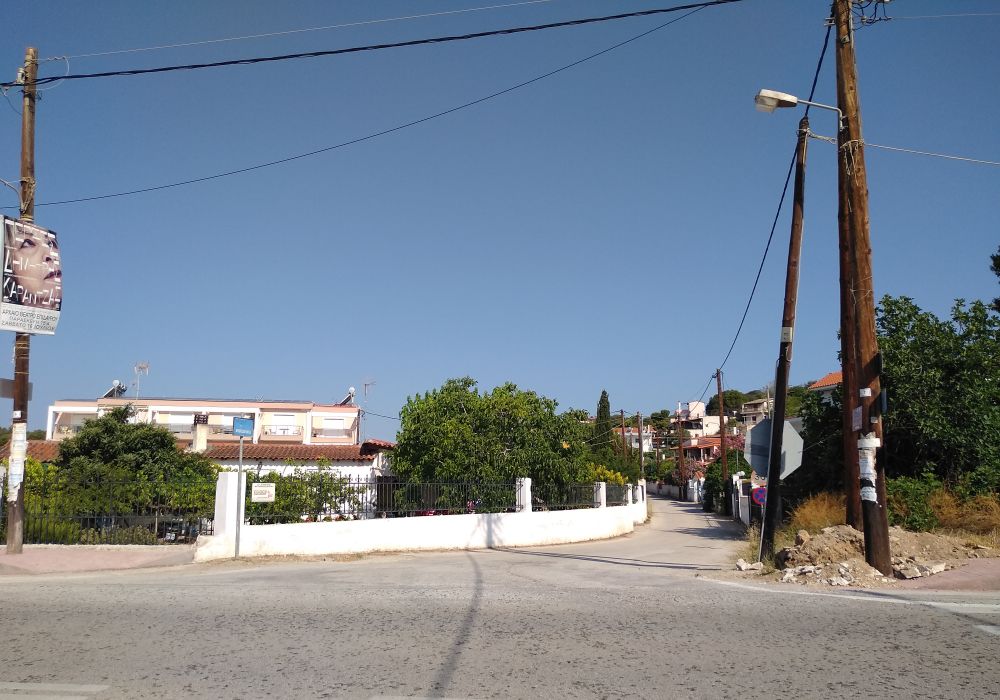
Kechries is located 82 km south of Athens, 8 km southeast of modern Corinth, and 4 km southwest of Isthmia. Other nearby villages are Loutra Oraias Elenis, Xylokeriza, and Kyras Vrysi. Around the port of Kechries, you will find today the small village of modern Kechries in a fertile natural environment, full of olives and fruit trees.
History of the Port of Kechries

It is not known when exactly the port of Kechries was constructed, but historians have found traces of people living in the area from prehistoric times on a hill on its north side.
It was probably already systematically inhabited during the Archaic era of the 7th-6th century BCE.
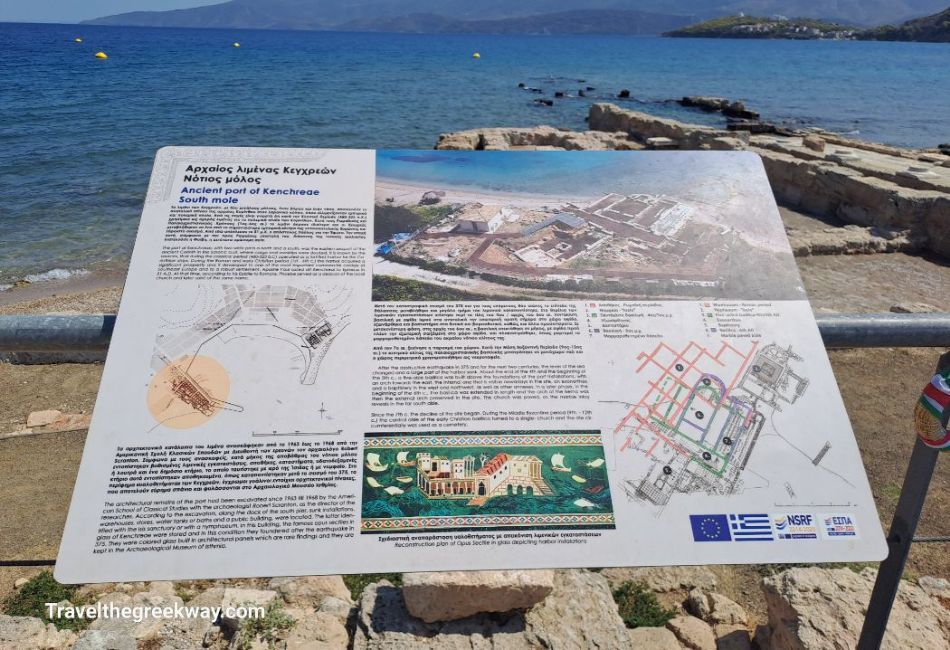
During the Classical Period (479-323 BCE) Kechries port was used as Corinth’s naval station for its fleet, as the city was always busy with fighting at a war.
**Corinth had taken Sparta’s side against Athens during the Peloponnesian Wars**.
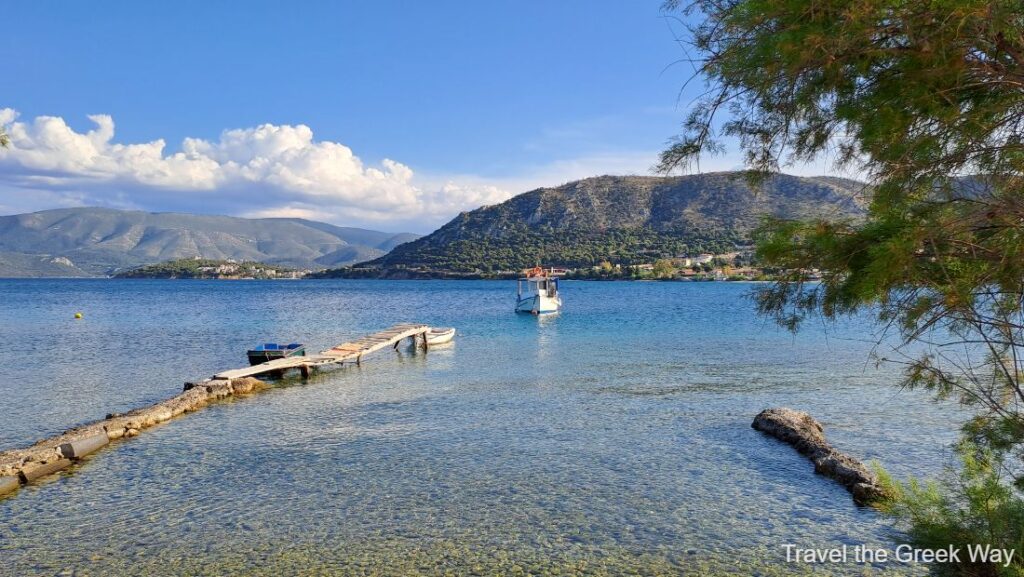
Kechries flourished during the Roman times, and there is evidence of temples devoted to Aphrodite, Isis, Asklepios, Poseidon, Dionysos, and Panas.
The famous geographer Stravon mentions in his many books that Kechries was the main port receiving visitors from Asia Minor.
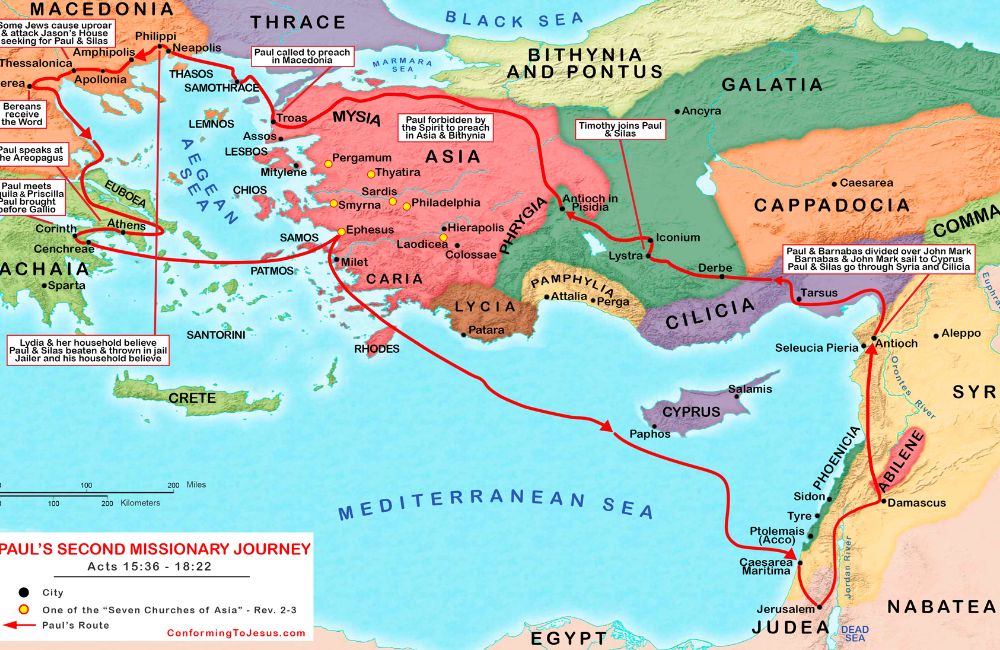
According to Acts 15:18, Apostle Paul left Greece using the port of Kechries during his second missionary journey end of 51 or early 52 CE.
Apostle Paul had his hair cut to fulfill a vow, probably a Nazirite vow, before leaving Corint,h where he stayed for 18 months and wrote the Epistles to the Corinthians.
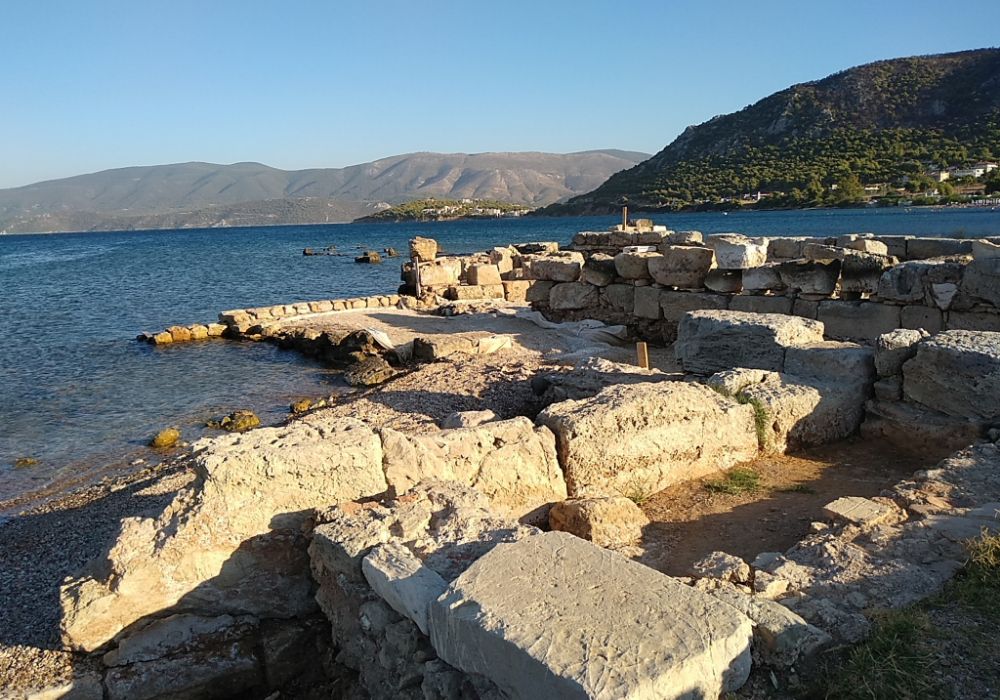
The port flourished again for the next 5 centuries and a multicultural community was thriving in the same area. During the 7th century CE, Kechries (after a plague that lasted for 50 years and several severe earthquakes) fell into decline.
During the middle Byzantine times (842-1204) Kechries was used as a trading port, which continued during the Ottoman occupation and until the early 20th century.
Suggested Reading onthe Peloponnese
- Ancient Corinth: Site Guide (7th ed.) by Guy D. R. Sanders
- Games and Sanctuaries in Ancient Greece: Olympia, Delphi, Isthmia, Nemea, Athens by Panos Valavanis
- Guide to Greece, Vol. 2: Southern Greece by Pausanias
The Site of the Ancient Port of Kechries
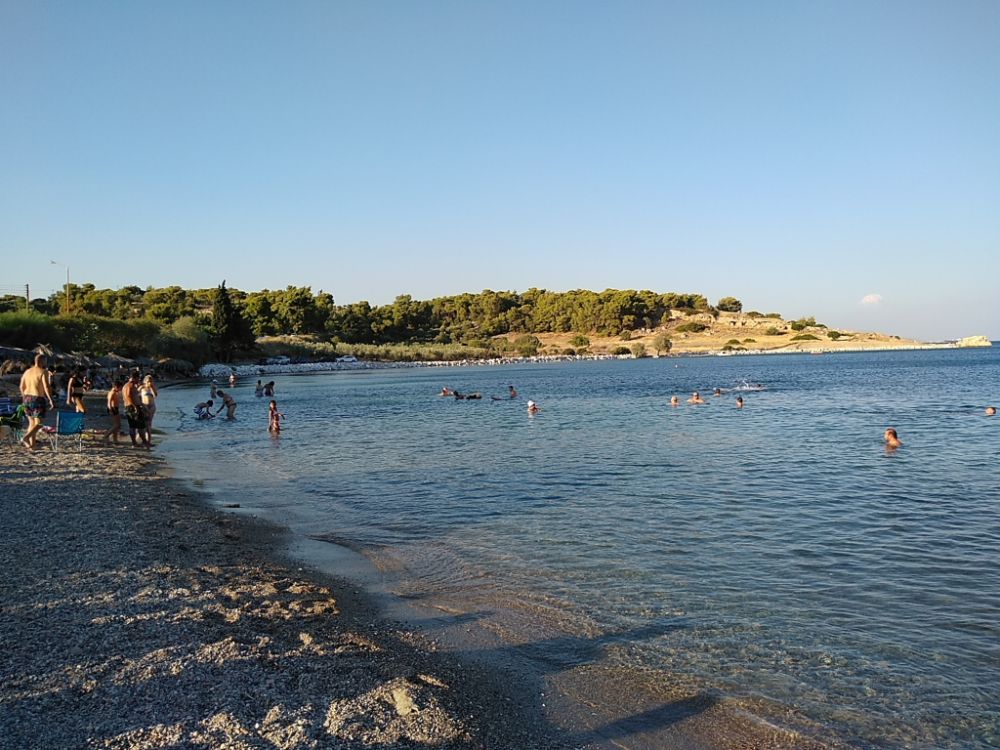
If you arrive at the port of Kechries during the summer, as I did, you will notice that in the north and south areas of the bay lie the remains of the port but the middle of the coast belongs…to the swimmers! 🙂
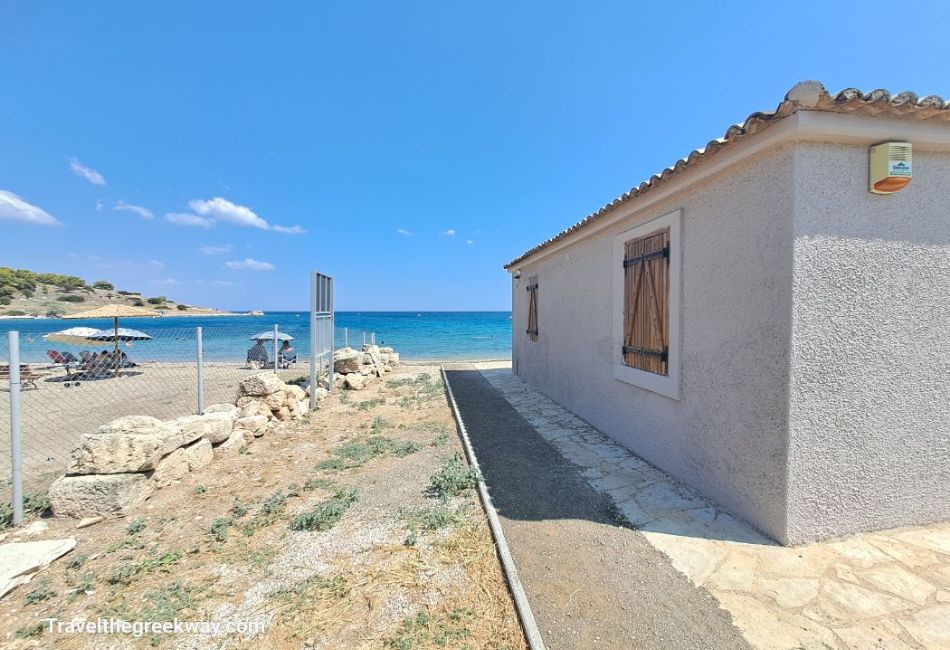
When I arrived at the entrance – free and open to the public, at least for the time being – I realized that archaeologists and other technicians were busy with restoration work.
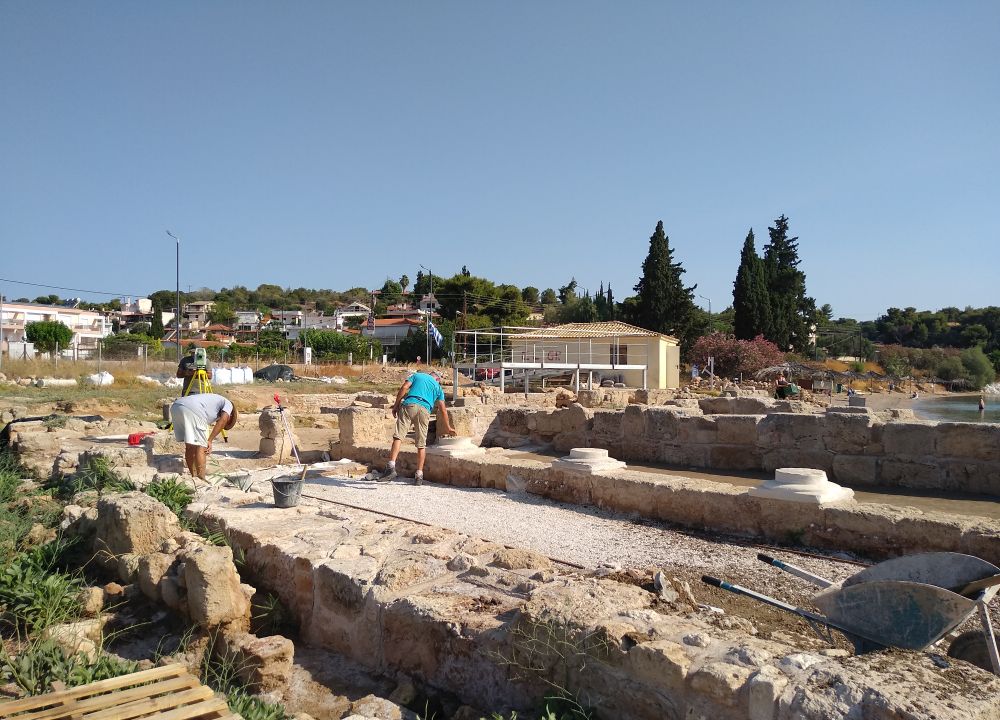
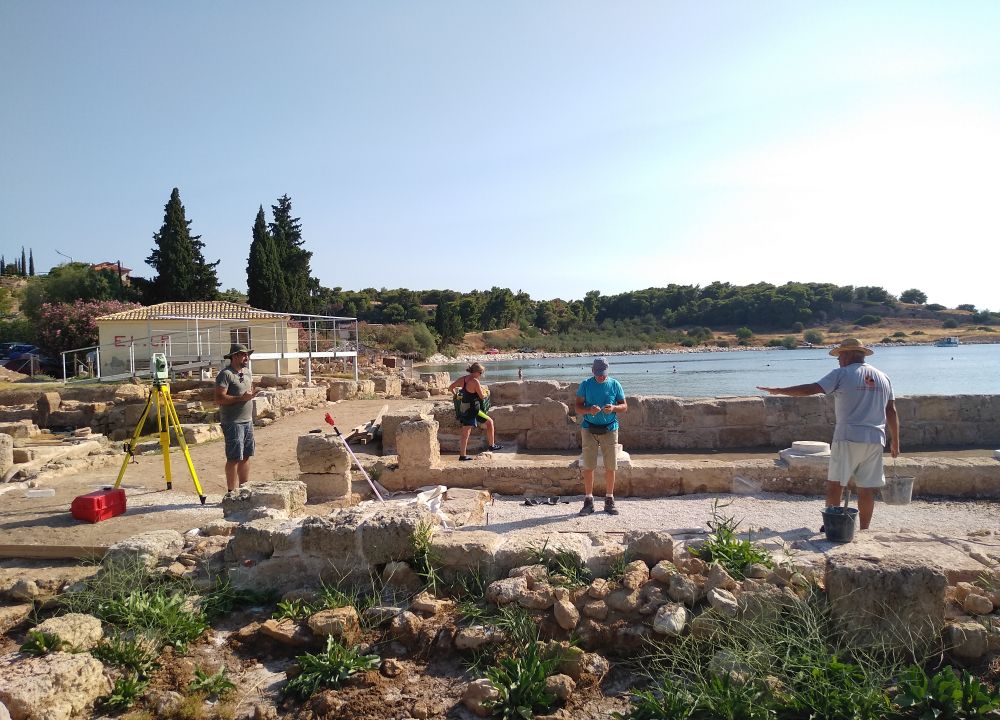
I had visited the site the year before as well and I was happily surprised to see that there has been a lot of restoration work done during this time.
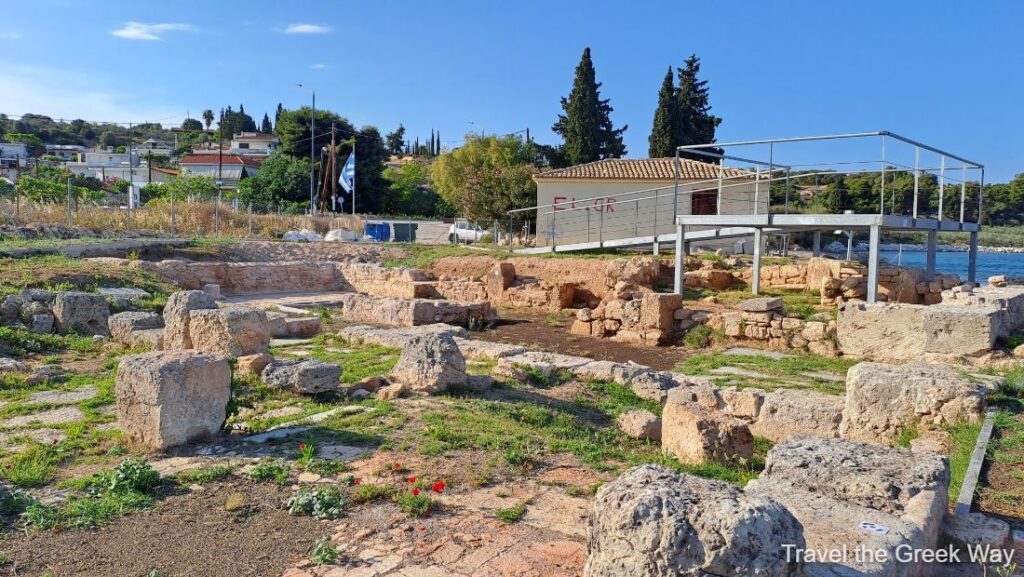
Between 1962 and 1969, the American School of Classical Studies excavated several buildings that proved the commercial importance of Kechries.
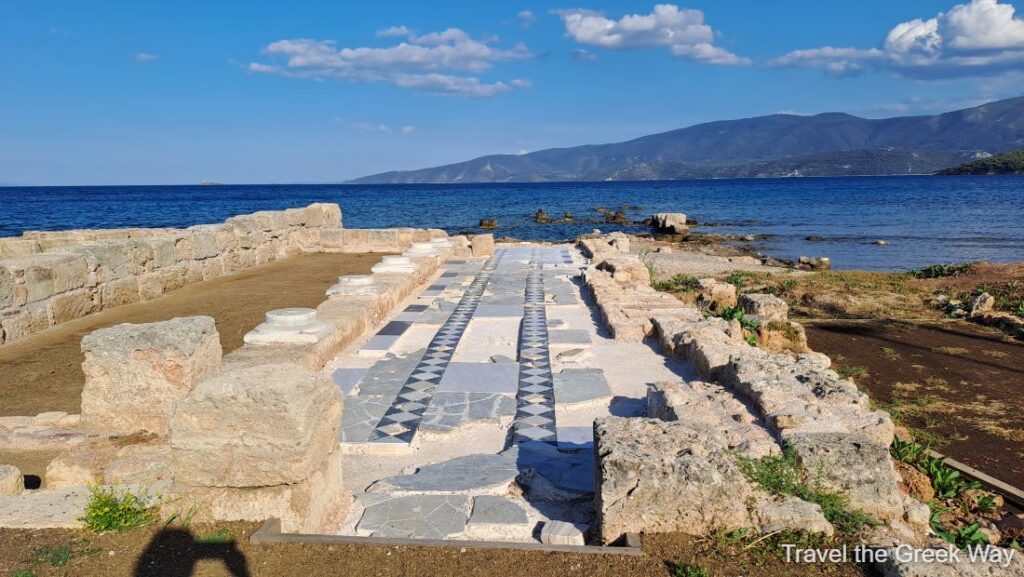
Today you can see the remains of structures that served the needs of the port, such as warehouses and shops. Most of the ruins are inside the water and ongoing works are trying to make them more visible.
On the north side of the port of Kechries, after the public beach, you will find the ruins of a medieval castle called Burtzi, just like the one in Nafplion.
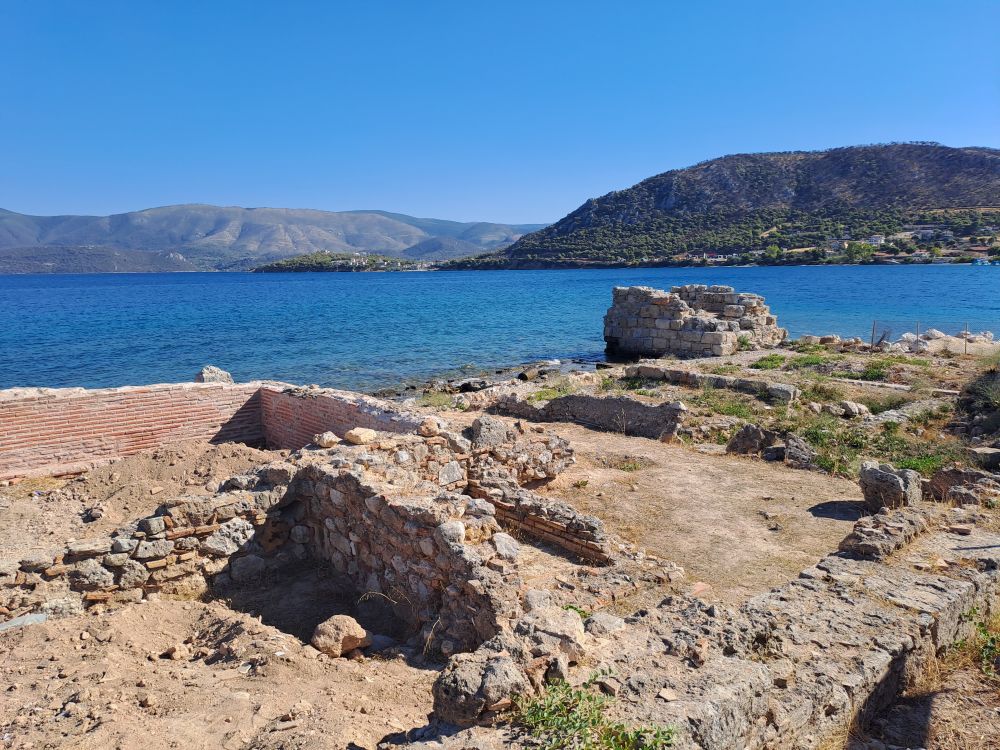
It was probably built during the 6th century BCE but Burtzi was undoubtedly a defensive position and an observation post.
The foundations and part of the tower’s superstructure are reminiscent of the Examilian wall and the Early Byzantine fortification of Ancient Corinth, works of the same period.
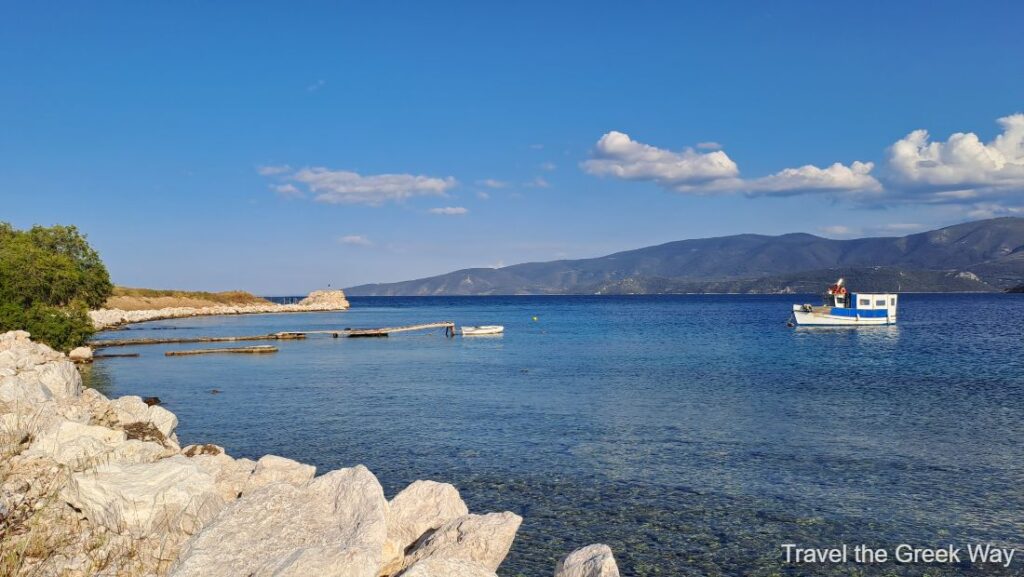
I came across another group of archaeologists in the northern part of the ancient port of Kechries.
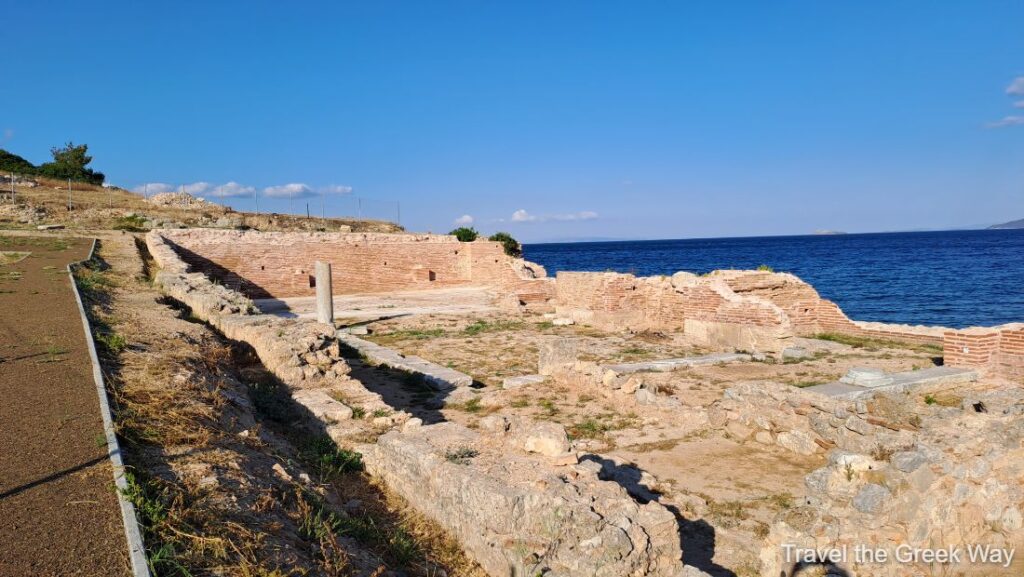
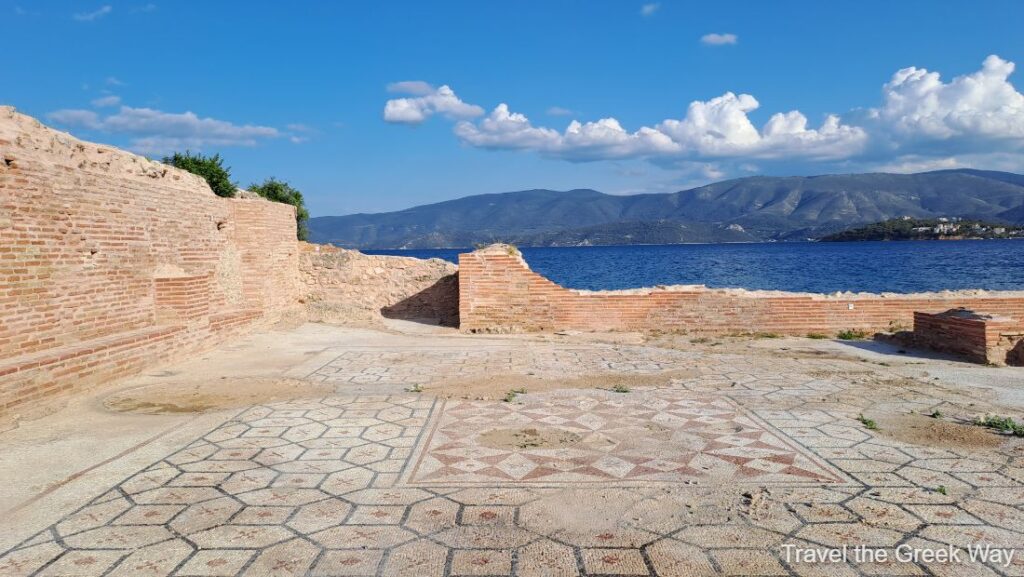
They were uncovering a Sanctuary dedicated to Aphrodite and I was very happy to be at the site and experience first-hand fieldwork. If you love archaeology, Greece is a total paradise for history buffs!
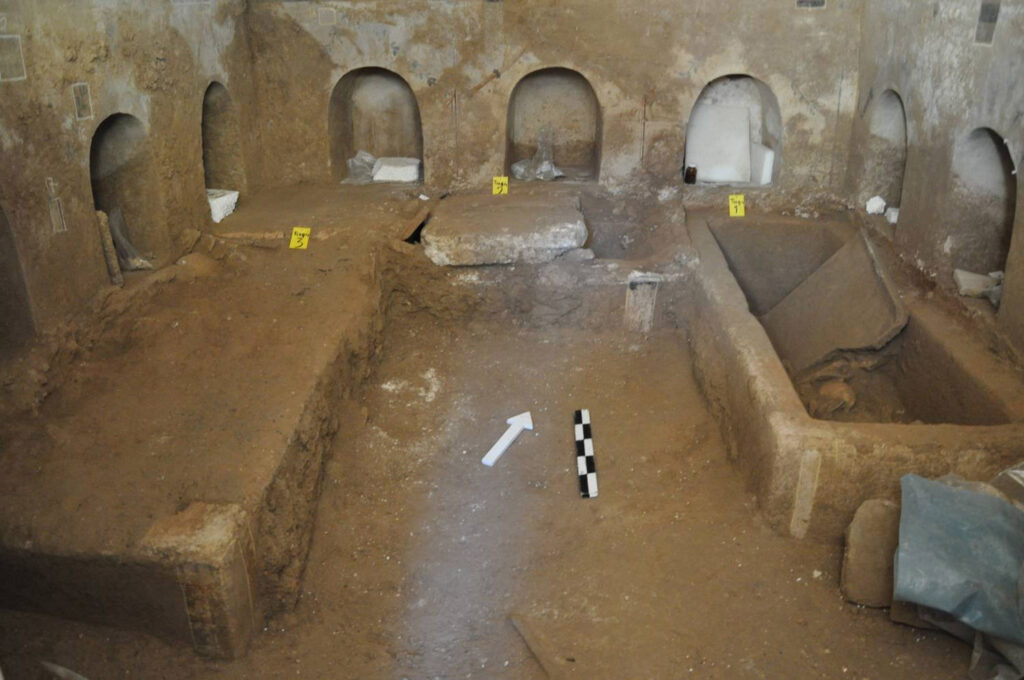
A bit to the north is the Koutsongila ridge, where archaeologists discovered an extensive Roman cemetery from the 1st century AD. It contains underground domed tombs, some of which have rich frescoes and paintings.
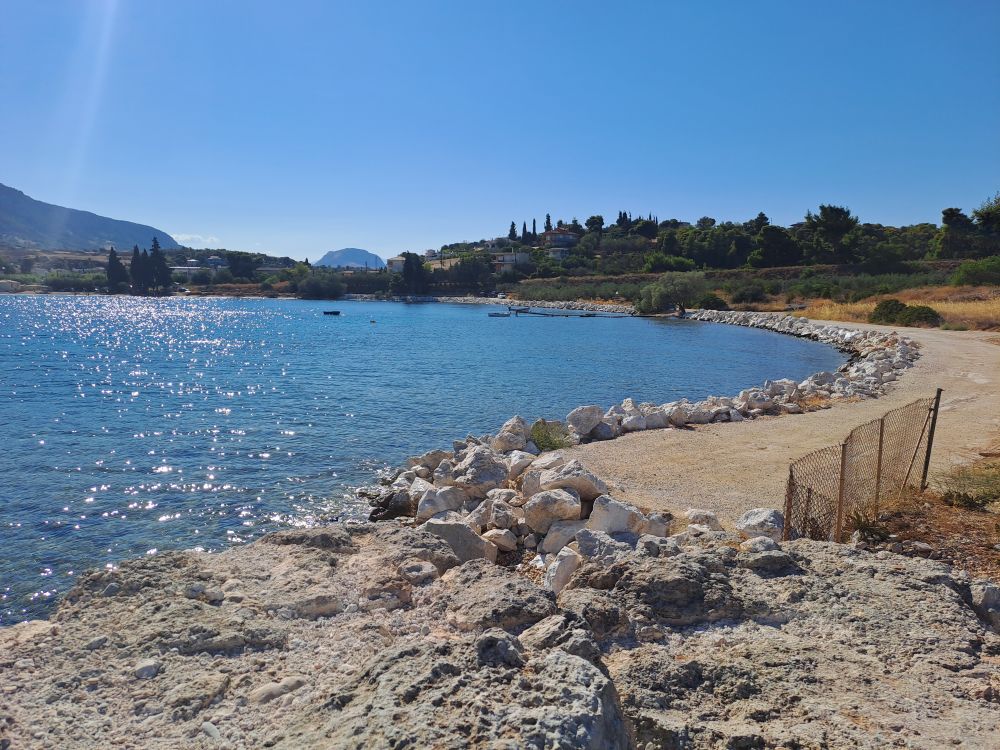
The Ancient Port of Kechries in Corinth may be small, however, there are many things to do and see, and they are all easily accessible on foot. On the plus side, nature is gorgeous with beautiful sea views and crystal clear, inviting water.
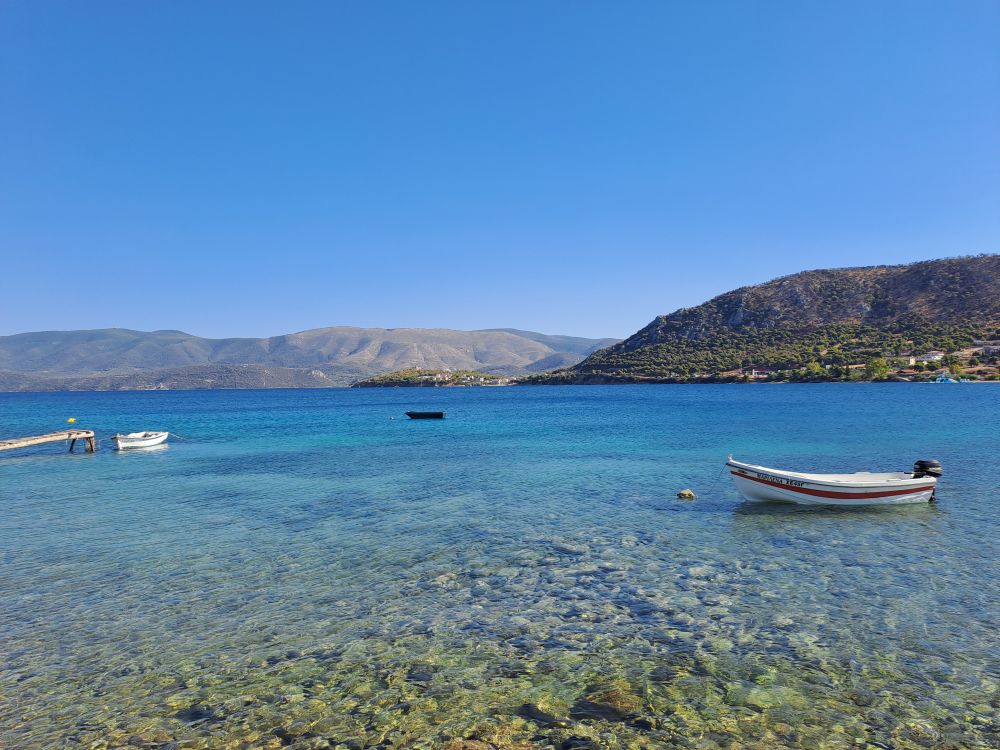
Items from the excavations are stored in the Archaeological Museum of Isthmia, such as the beautiful and unique paintings and glass/ivory opera sectile, dating from the 4th century CE found in the sea.
You may also enjoy: 4-Days in the Peloponnese
FAQs for Kechries Archaeological Site
Is there a WC inside the Kechries Site?
No, there is not.
Can I drink or eat inside Kechries?
You are not allowed to eat or drink inside any archaeological site in Greece, only water is allowed to carry around. There is no café/restaurant inside the site.
Can I swim in Kechries?
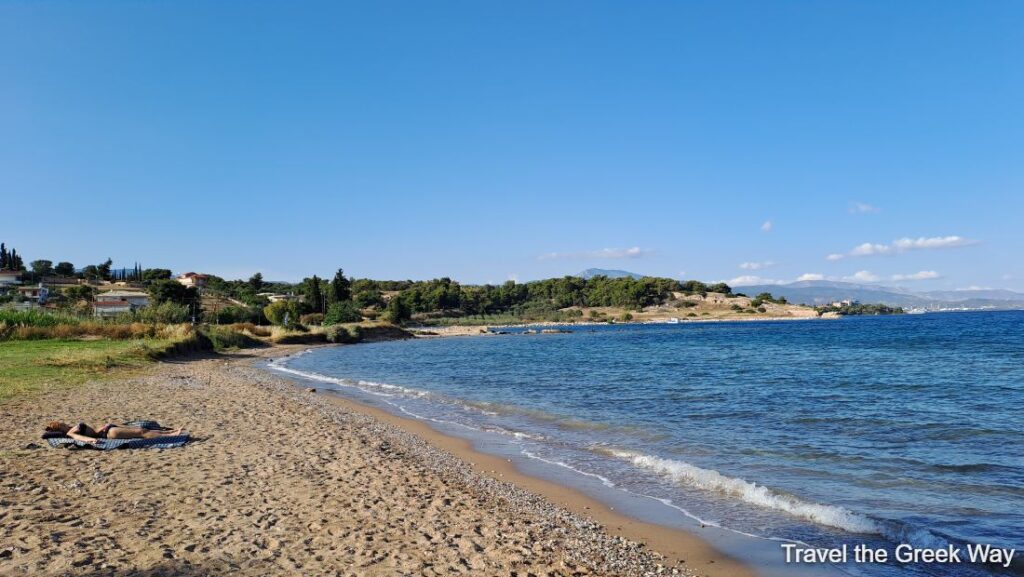
Yes, there are 2 beaches, one in front of the archaeological site of Kechries, which is unorganized, and an organized one, with umbrellas, beds, and a great bar where we had a cocktail. Great place to stay, especially if you have a family.
How to Get to Kechries

The easiest way to explore the many archaeological sites of Corinth is by far with a rental car. There are quite a few important historical sites, that you may want to visit, besides Kechries:
- Isthmia Archaeological site
- Corinth Canal
- Diolkos
- Ancient Corinth
- Acrocorinth
- Ancient Nemea (and have some wine tasting as well!)
There are public buses that you can get from Athens to Corinth and then change to get a local bus that can take you to Kechries. The fast train Proastiakos also gets you to Corinth and from there you can get a taxi or a local bus to Kechries.
Where to Stay near Kechries
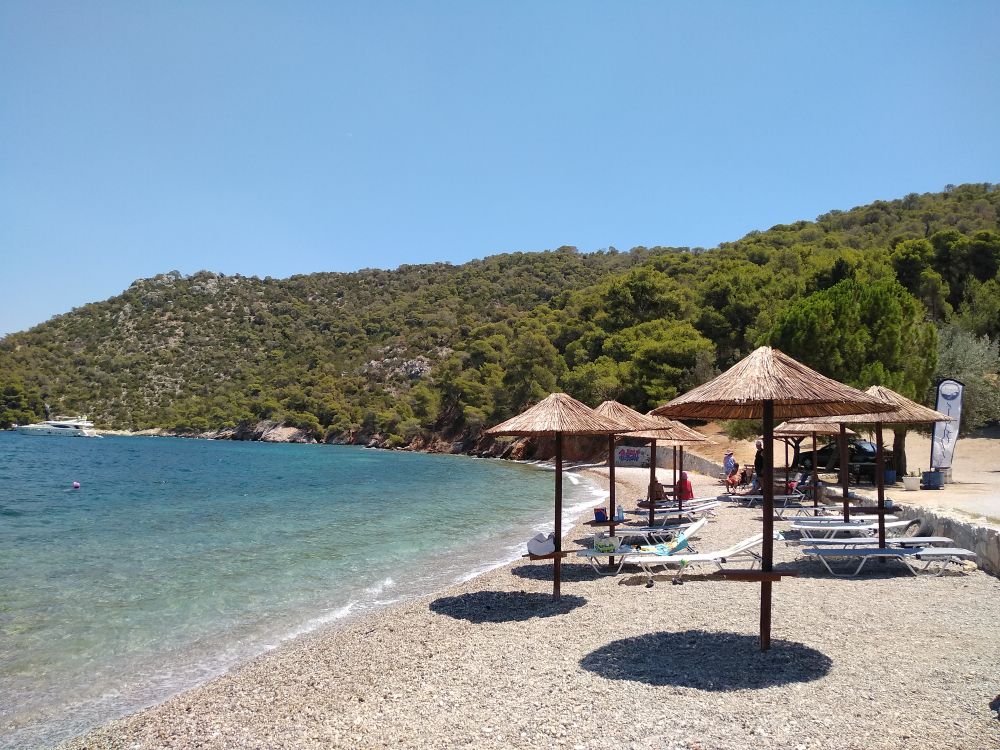
I love the 4 km far village of Loutra Oraias Elenis (Baths of Helen of Troy). My sister goes there every year and stays for 2 months in an apartment.
Mirella Studios(family-friendly, mid-range, breakfast) is a well-equipped property with beautiful sea views and gardens. Nearby is a small beach with sunbeds and umbrellas. A real paradise!
Join Our FB Group & Subscribe to My YouTube Channel!
For more travel to Greece tips and beautiful destinations in the Greek islands please join my FREE Facebook Group or SUBSCRIBE to my YouTube & TikTok channels for amazing videos of Greece! Happy and safe travels, Evgenia.
My Most Popular Posts
- Greece Packing List
- First Time to Greece – Most Important FAQ
- Mamma Mia Greece Locations
- Athens Hotels Near Acropolis
- Best Athens Beach Hotels
Essential Travel Info for Greece
- ‘Hello’ and ‘Thank You’ in Greek: “Ya sou” and “Efharisto”
- Booking.com: I use Booking.com mostly for Europe.
- All-Inclusive Resorts in Greece
- FerryScanner to book ferries to the Greek Islands
- Rent an Affordable Car in Greece
- Athens Metro Website (timetables and ticket info)
- Trains (Hellenic Train)
- Public Buses KTEL
- Get Your Guide: For all your day or multi-day tours and city guide needs, I use Get Your Guide
- Emergency Numbers Anywhere in Greece: AMBULANCE 166 – FIRE 199 – POLICE 100– EMERGENCY NUMBER 112
